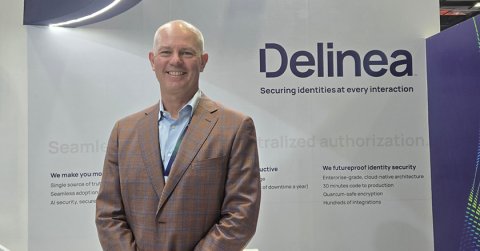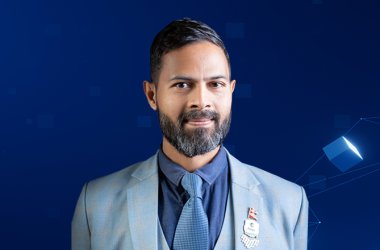
With the cybersecurity landscape transforming rapidly, Art Gilliland, Chief Executive Officer at Delinea, discussed how artificial intelligence (AI) is both amplifying opportunity and threat and why identity is emerging as the new frontline in cyber defence, in an interview with Tahawul Tech.
Gilliland explained: “In the adversary world, there are a ton of cybercriminal marketplaces. Because of that, individual cyber gangs can be highly skilled at identifying users and creating profiles, or at breaking in and gaining a foothold. They then sell those parts of the kill chain to the next player. Such a marketplace is being supercharged with AI.
“The challenge for companies is that there’s a structural imbalance between a company and a marketplace. In a company, protection is achieved through a structured budget that’s renewed annually. Once the budget is depleted, it’s exhausted. For adversaries, it’s a market. They can experiment endlessly, and they only have to be right once. This structural imbalance is driving their innovation, and new tooling is making them faster and more efficient. Adversaries are going to move to AI very quickly.”
Gilliland pointed to Delinea’s recent findings that identity-related vulnerabilities now make up nearly 13% of all Common Vulnerabilities and Exposures (CVEs). “Identity is becoming a very high-value target”, he said. “There are two reasons for that. First, it’s way easier to steal someone’s identity and log in. The bad guys don’t really ‘break in’ anymore — that’s hard to do. The tooling for detecting break-ins, such as firewalls and endpoint security, is quite effective. But if you log in, it’s just way easier and cheaper. So, many adversaries are moving to identity as an attack vector because it’s cost-effective”.
“The second reason,” he continued, “is that if you log in using a valid credential or identity, you’re invisible to all the other security controls. Not only is it cheaper, but you can also stay in the environment much longer since you’re allowed to be there. That combination — cheaper and invisible — is attractive to the bad guys. That’s why we’re seeing this rise”.
When asked how AI-driven defences can help detect and prevent such attacks, he highlighted Delinea’s focus on intelligent authorisation.
“One of the things Delinea is investing in heavily is intelligent authorisation, or AI-augmented authorisation”, he said. “We look at a lot of context around access. There are obvious checks, such as verifying whether a login request can actually come from a given location, but there’s also workflow context. For instance, if you’re logging into a sensitive system, there’s usually a ticket from ServiceNow or a similar tool”.
Gilliland explained that AI can correlate this contextual information in real time. “We can ask a user why they want access, capture their response, and correlate it with where they are, what their role is, and what the workflow says. AI helps us connect all those dots and translate human interaction into high-fidelity insights that help the system make better authorisation decisions.
“Without AI, you could do all that manually, but only for a few logins. You couldn’t do it thousands or tens of thousands of times across an organisation. With AI, you can. You can monitor every login and interaction, making precise access decisions without slowing down productivity. That’s the real benefit of intelligent authorisation”.
To stay ahead, Gilliland said organisations need to adopt automation in their defences. “Companies need to automate the way they respond, monitor, and view identity access. Step one is taking better control of credentials. Step two is being able to watch, manage, and authorise access in real time”.
Gilliland acknowledged that while AI introduces new risks, it is also a powerful enabler. “The reason people move to AI is because it creates huge benefits. Companies are using AI in their environments to drive real productivity and efficiency. We’ve seen that within Delinea, in how we use AI to build software and integrate it into our products”.
He concluded: “Organisations will continue embedding AI into their products and processes. They need to consider how to secure it, automate the process, and stay ahead. There are new horizons that AI will open up that we don’t even know about yet. It’s the future, and it’s something we’re truly excited about”.
Image Credit: Delinea





